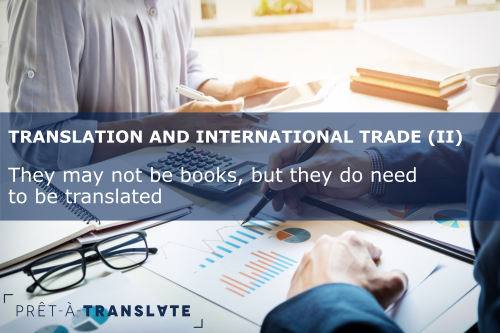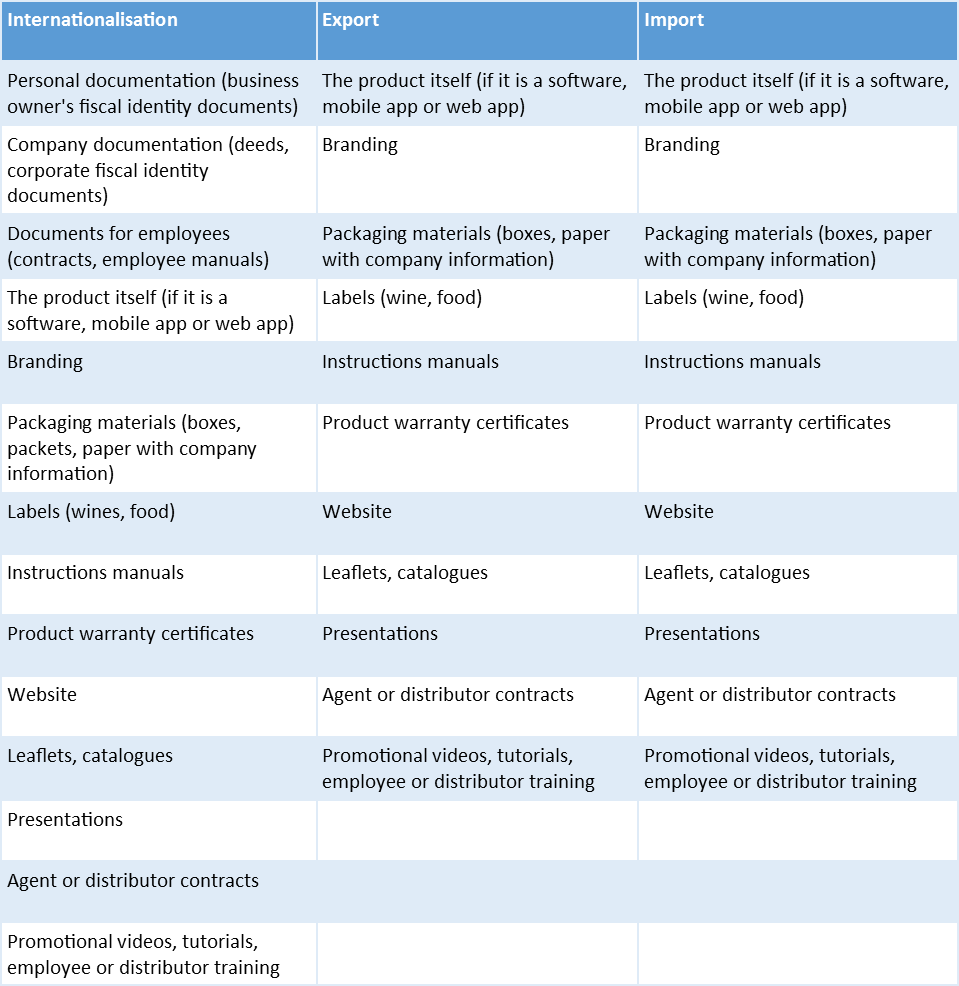
Translation and International Trade (II)
They may not be books, but they do need to be translated
Today is World Book Day and many blogs will no doubt talk about Cervantes, Shakespeare, literature and literary translators, like I did last year.
Although it isn’t such a fascinating world, I am going to take this opportunity to talk about other types of documents that could be very useful for your company when translated.
In my last post, I told you about the important role translation plays in international trade. Today, we’re going to look at which documents or media are often translated for the different activities related to foreign trade, such as internationalisation, import and export.
The following table shows the most common documents:

I’m sure you could think of some more, and if you do, please add them to the comments so we can have as many ideas as possible on the table for whoever passes by to read this post.
Does the translation need to be sworn?
Whether a translation has to be sworn or not is something that confuses a lot of companies.
You need a sworn translation when the translated document has to be legally valid in the target country. In Spain, only sworn translators or interpreters recognised by the Ministry of Foreign Affairs and Cooperation can provide sworn translations, which must have their stamp and signature.
To trade internationally, sworn translations are often required for a parent company or business owner’s official documentation, such as deeds or corporate fiscal ID, the business owner’s fiscal ID or sometimes contracts signed by employees, agents or distributors.
Requirements change from one country to another or from one company to another, so before you ask for a sworn translation, I recommend that you find out if it needs to be sworn or not from the organisation requesting the documentation.
The rest of the documents mentioned on the table do not need to be sworn, but it is important to work with a professional translator who has experience in the subject area. If I am of any use to you, I would be more than happy to help 😉.
Your products need to be translated too!
As I have already explained before, localization involves translating and adapting a product to the linguistic and cultural conventions of a language and country. This usually occurs in the field of IT, but software and mobile apps are not the only products that need to be translated and localized.
Adaptations are also needed in the food industry. Sometimes it is the product itself that is modified, where some of the ingredients are changed to make them more appealing to local tastes; in other cases, it is the labelling, packaging or even the branding, especially if the name could have a negative connotation in the target country.
Once you’ve tweaked your product to local tastes, you need to do the same with your digital and physical presence in that country, from your website, blog and social media to advertising, catalogues for distributors or presentations for clients. Oh, and don’t forget the power of video with subtitles or dubbing in your international marketing strategy, so you don’t deprive your clients of having all the information they need in their language.
I know it seems like a lot to deal with and you probably don’t know where to start. Like always, I recommend that you get some advice from a foreign trade expert and once you have a strategy in place, take baby steps forward.
That’s just what I am going to do. I am going to leave this post for now so that it isn’t too much to take in. In the next and last part of this series, I’ll tell you about some translation problems associated with this type of documents and how we can avoid or reduce the impact of them.
See you for the next post!
